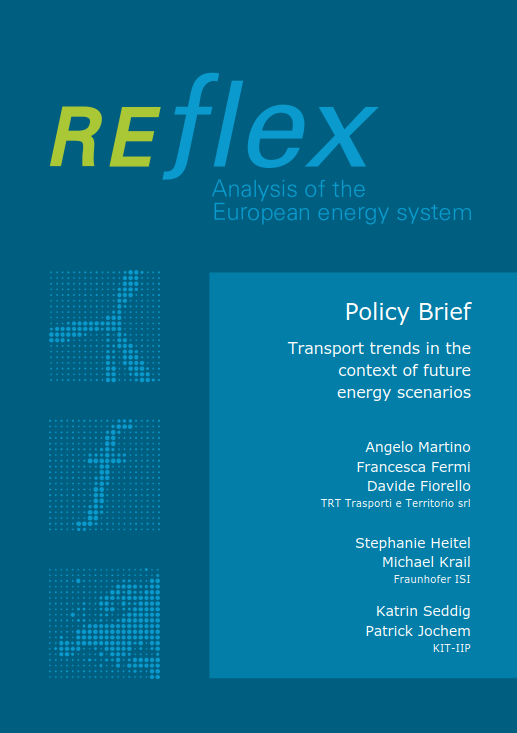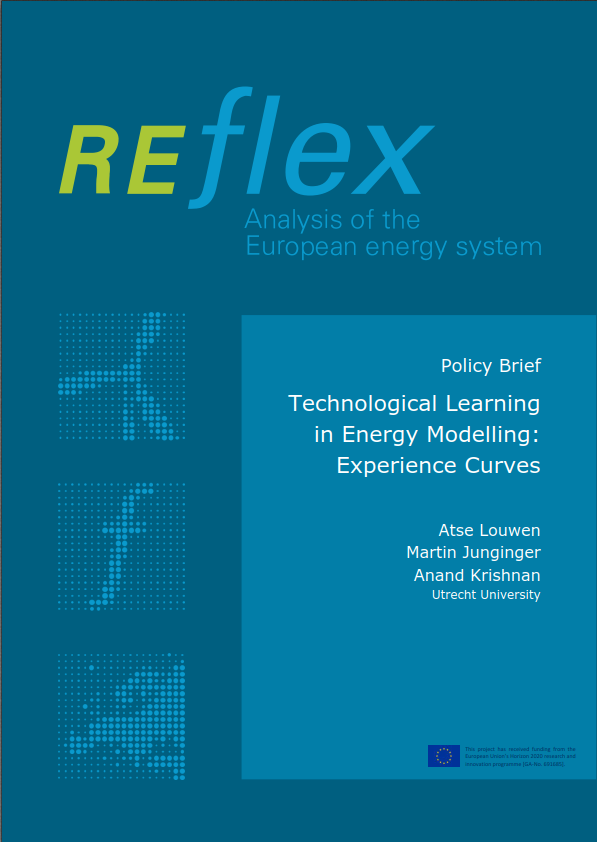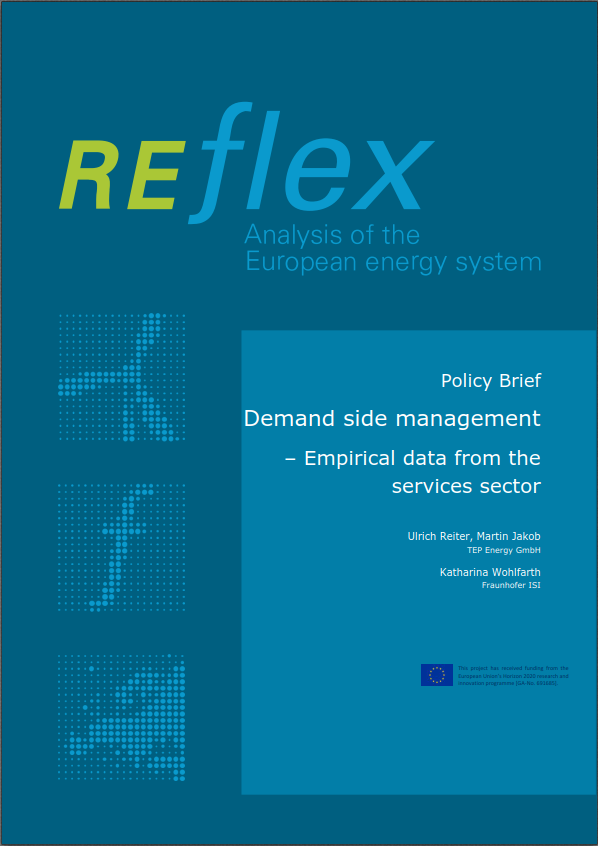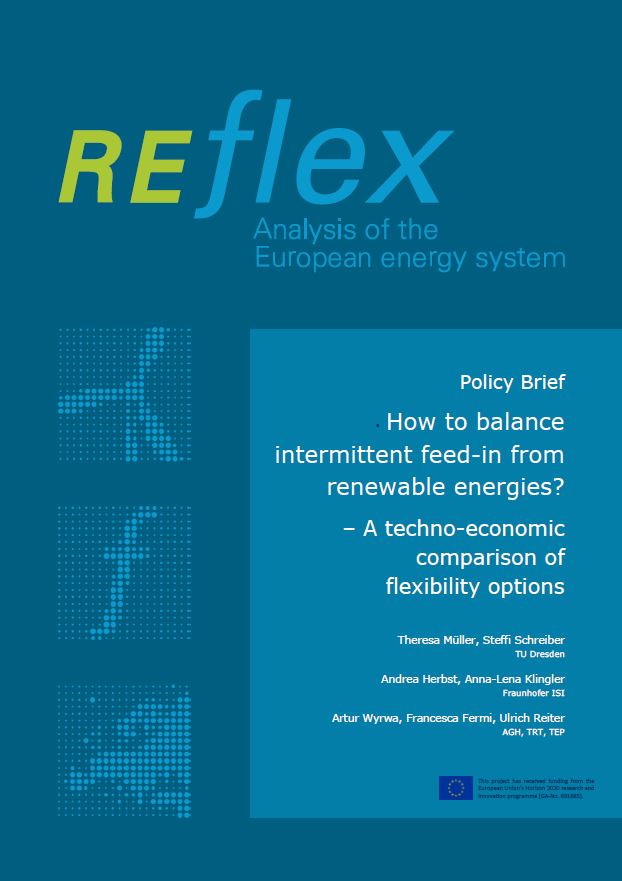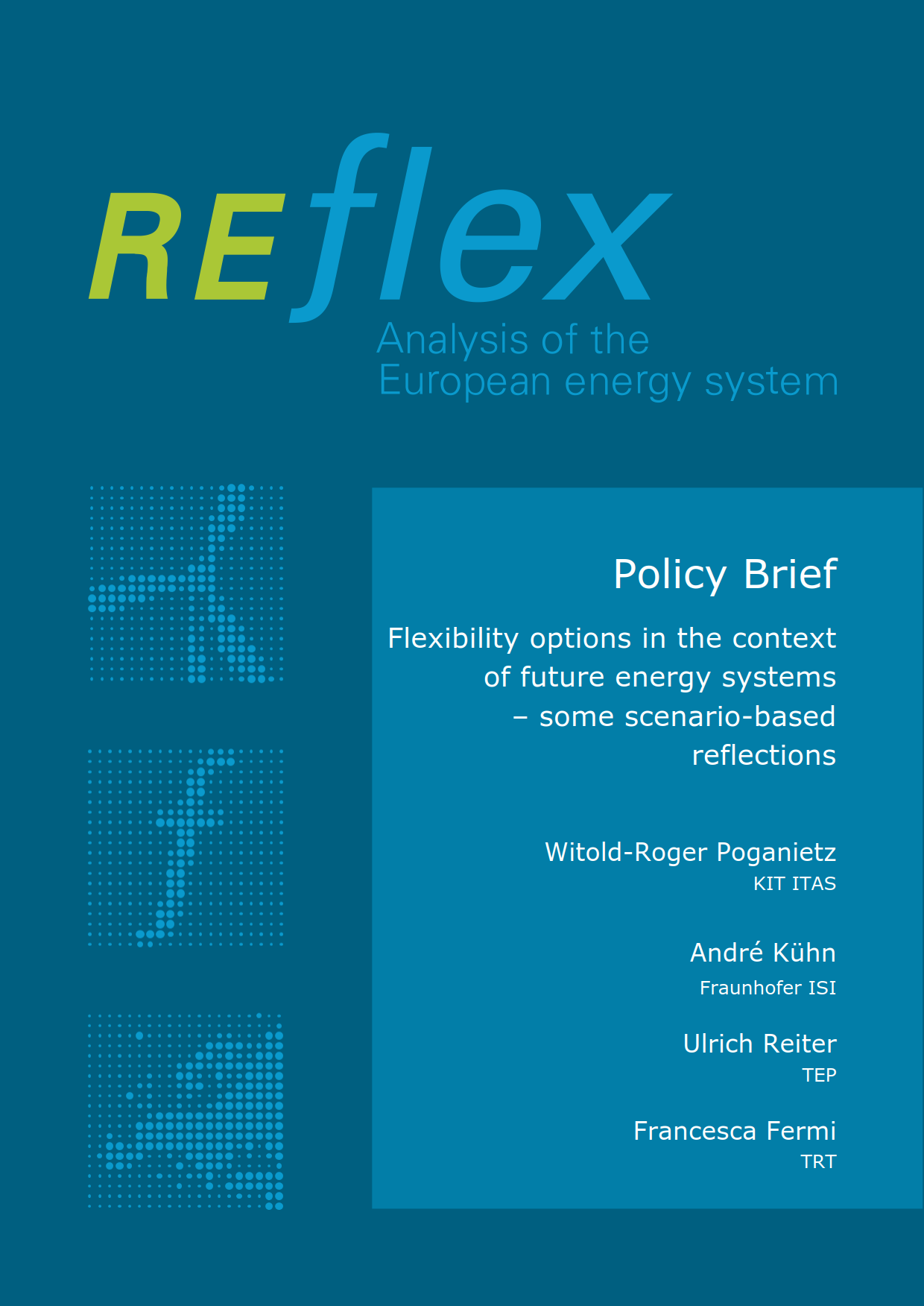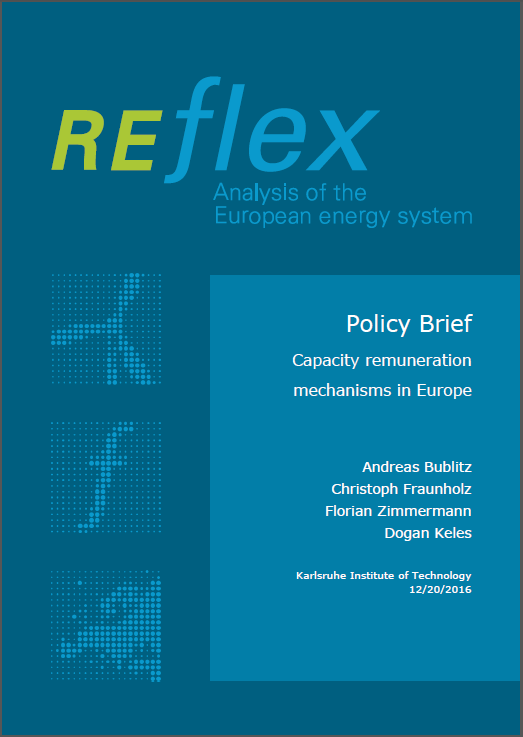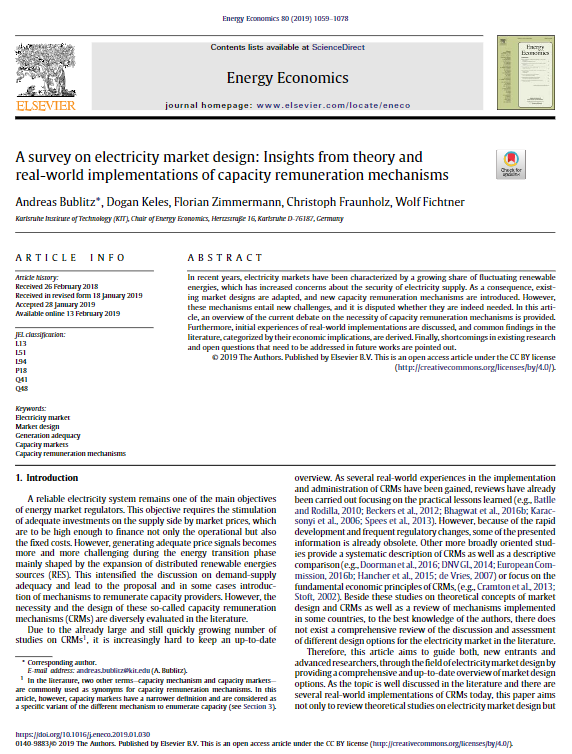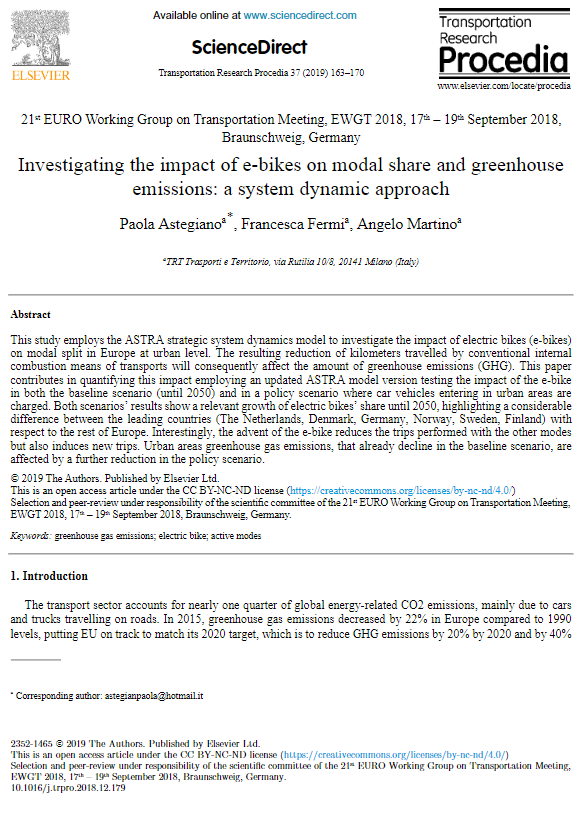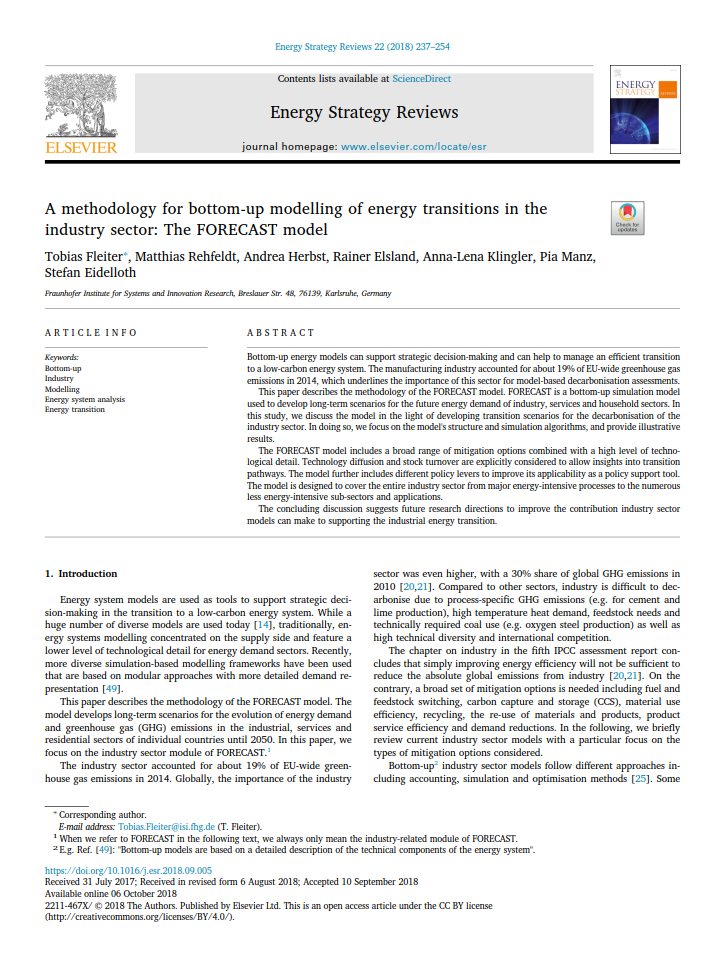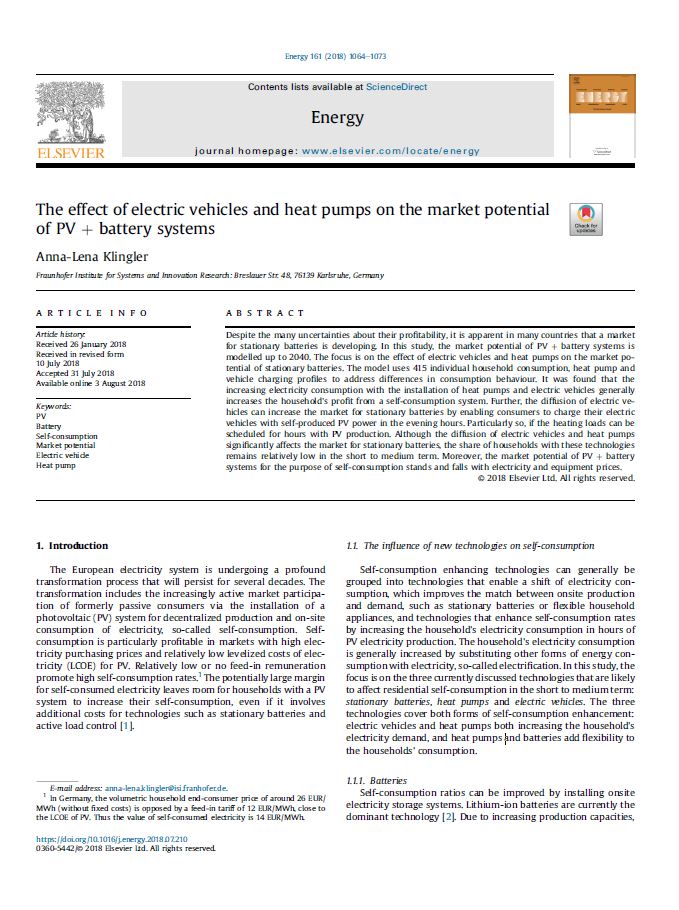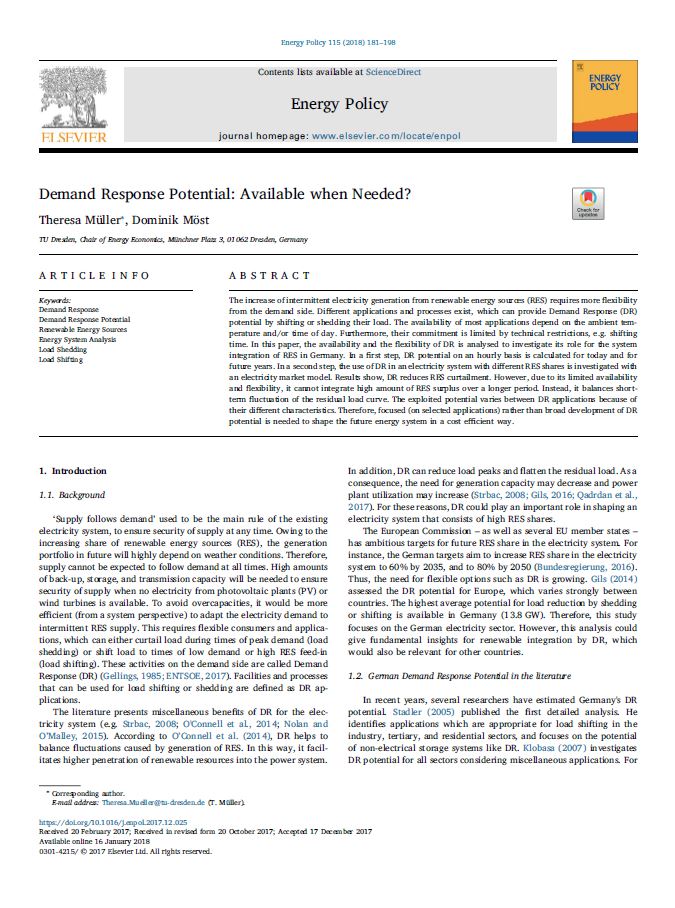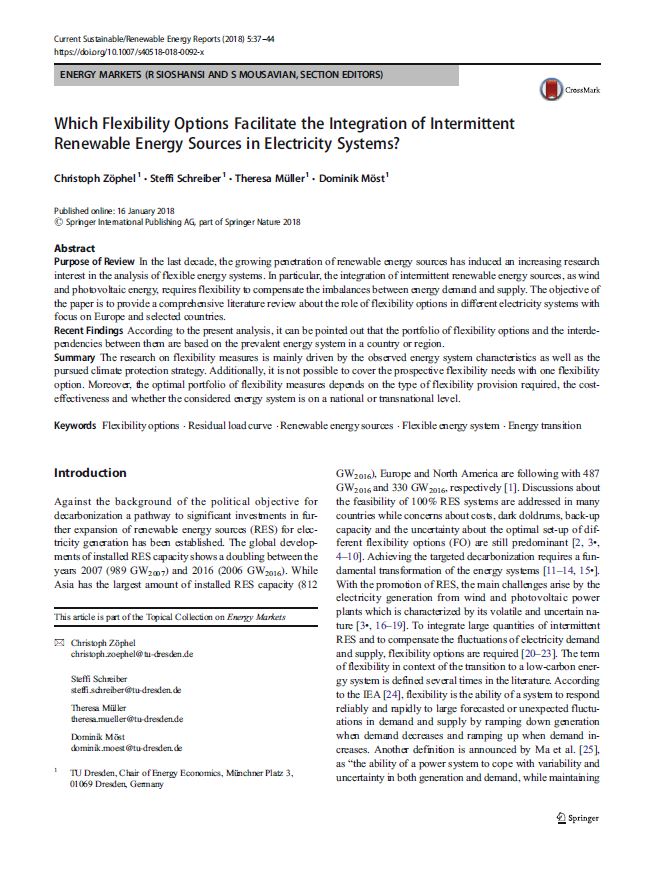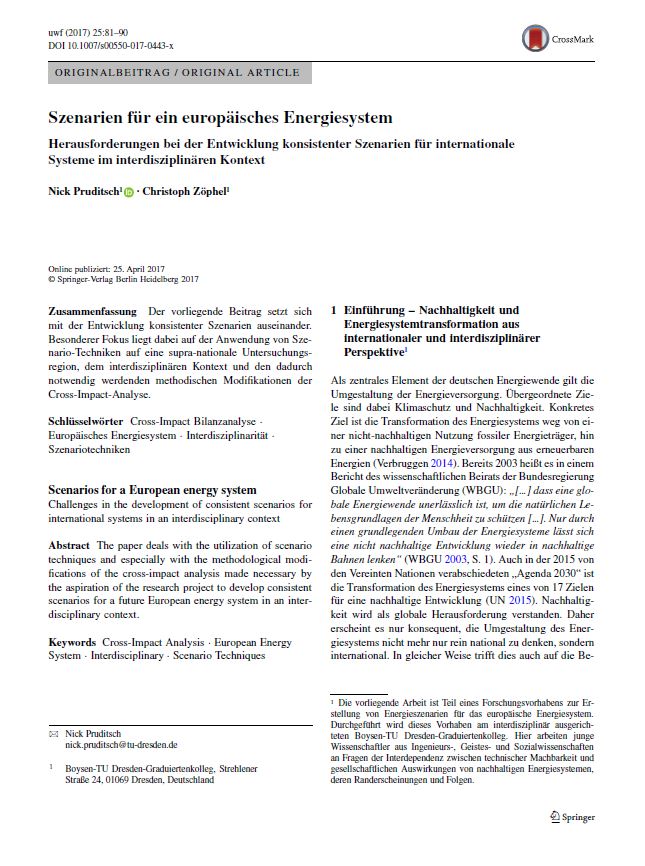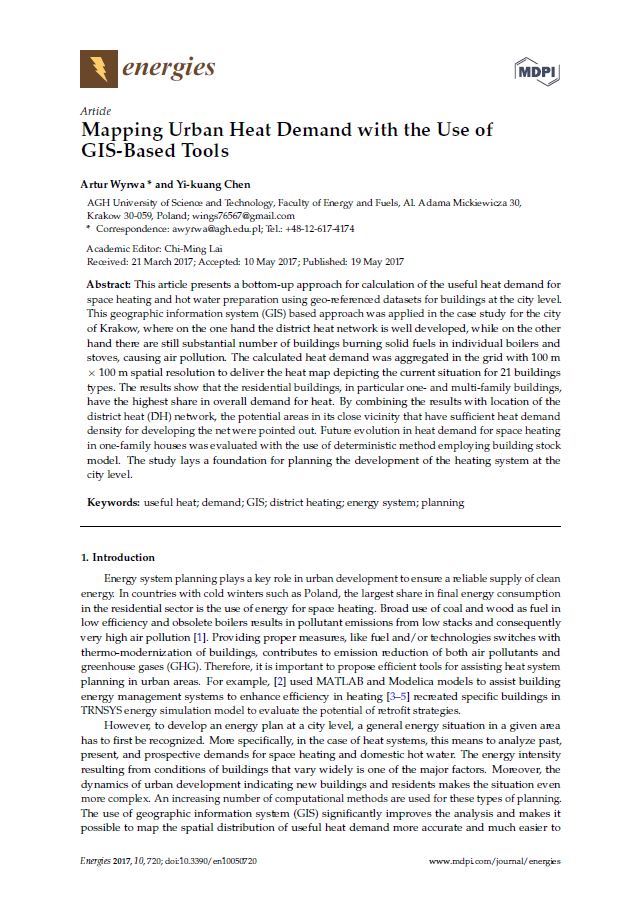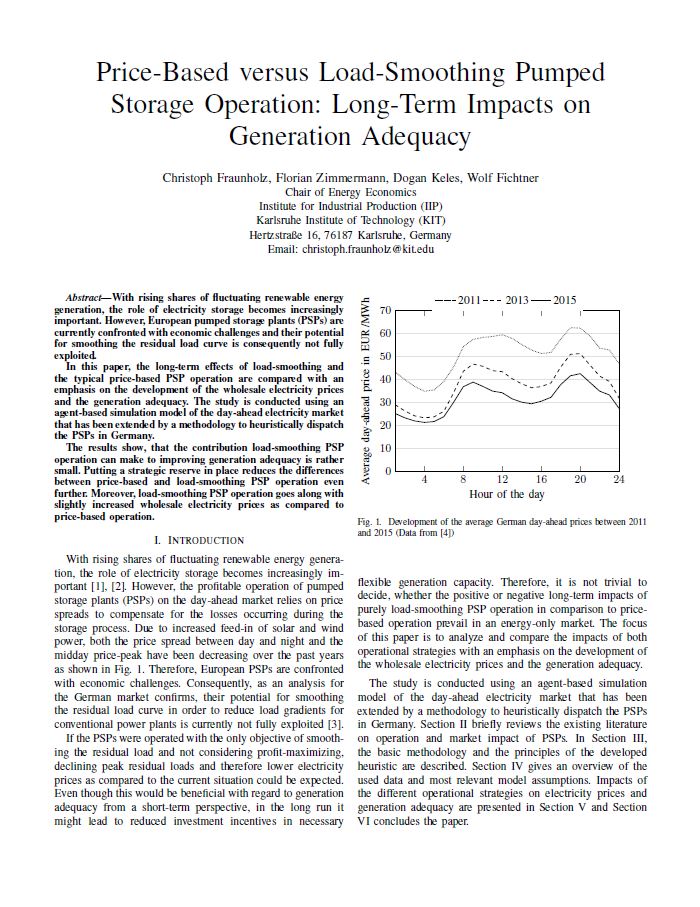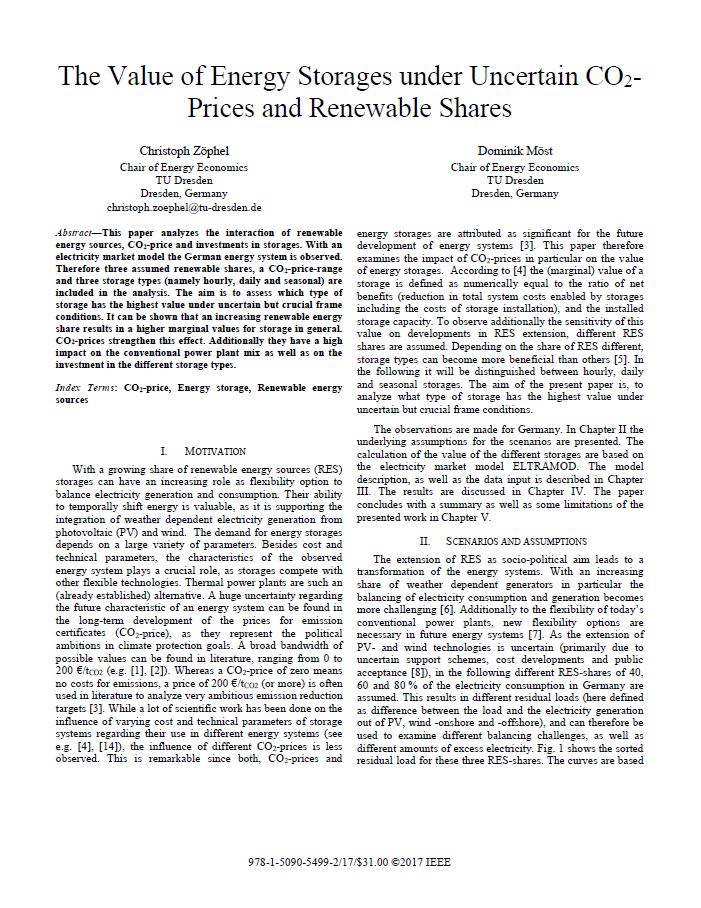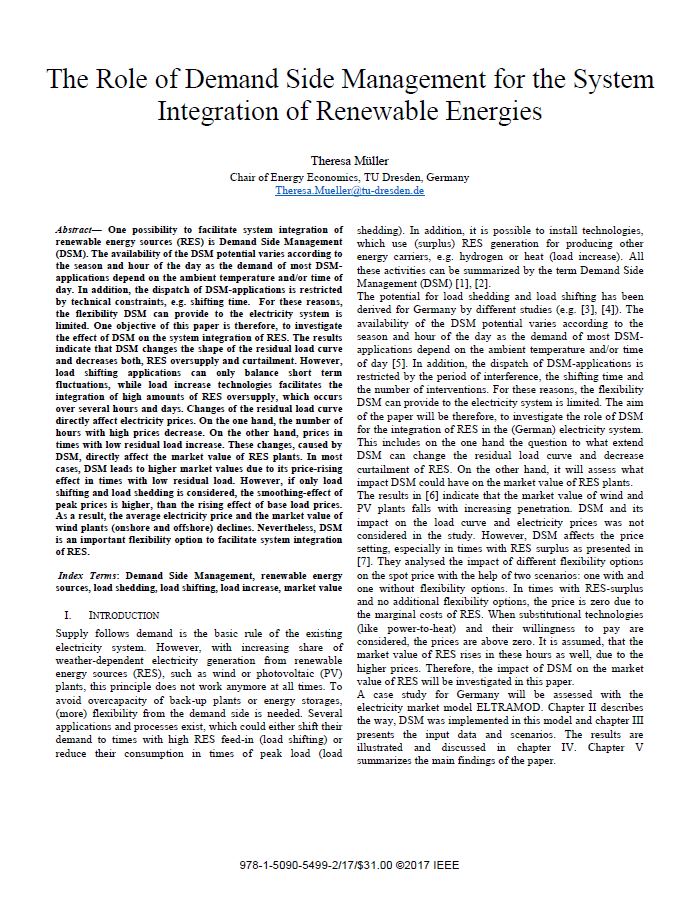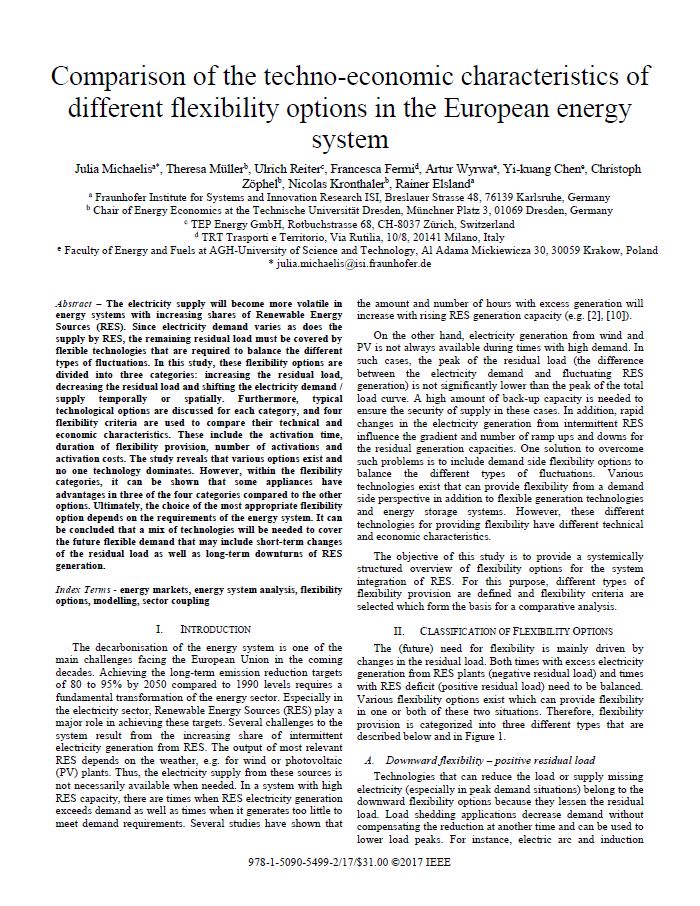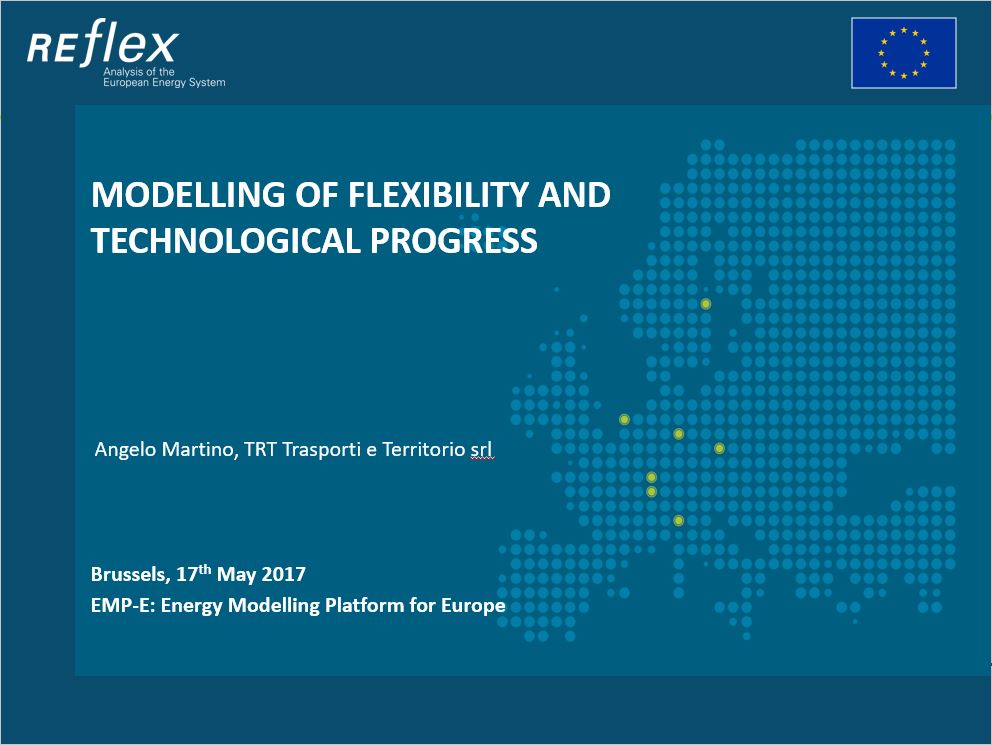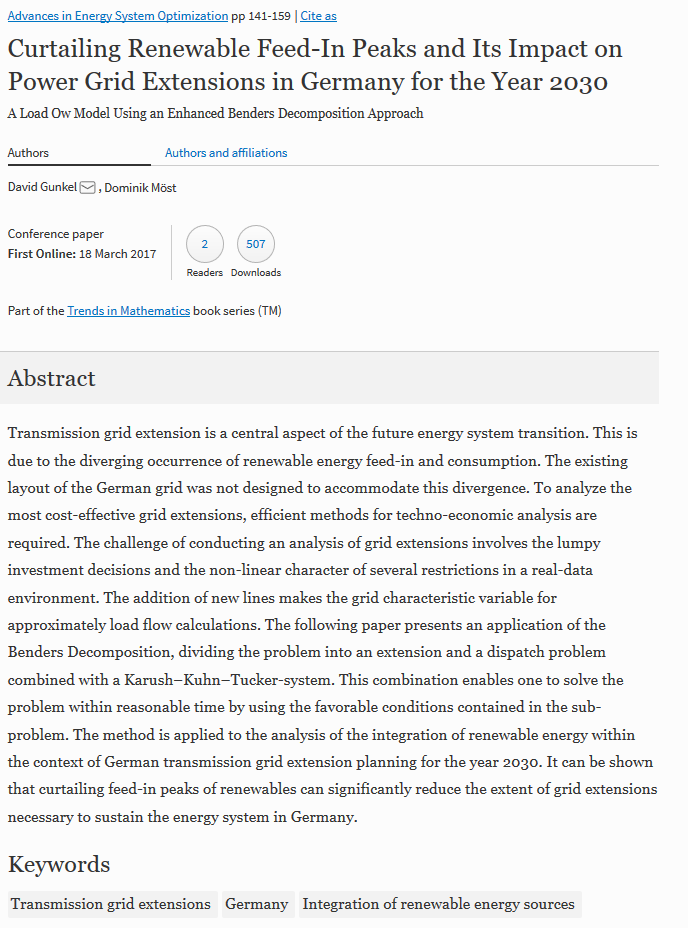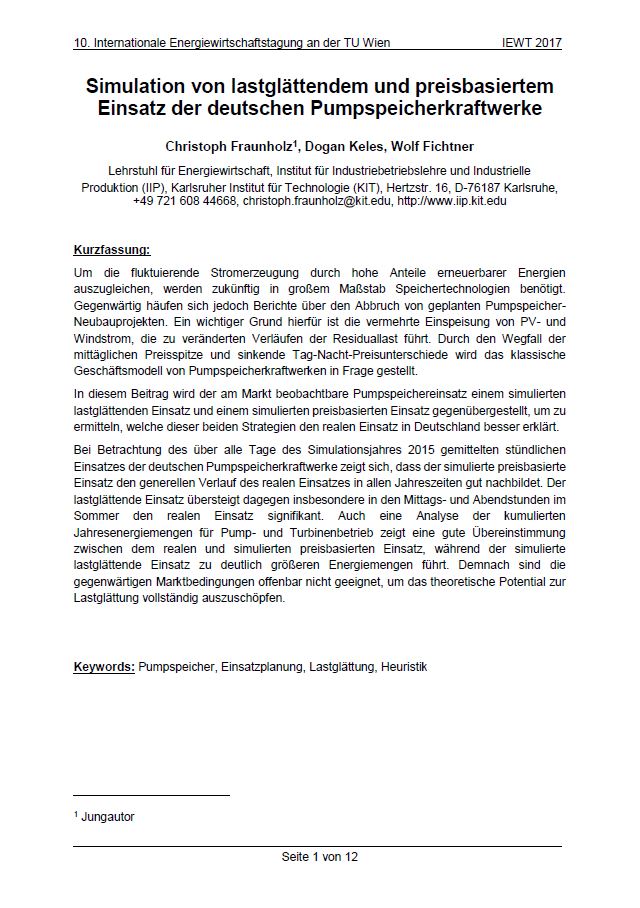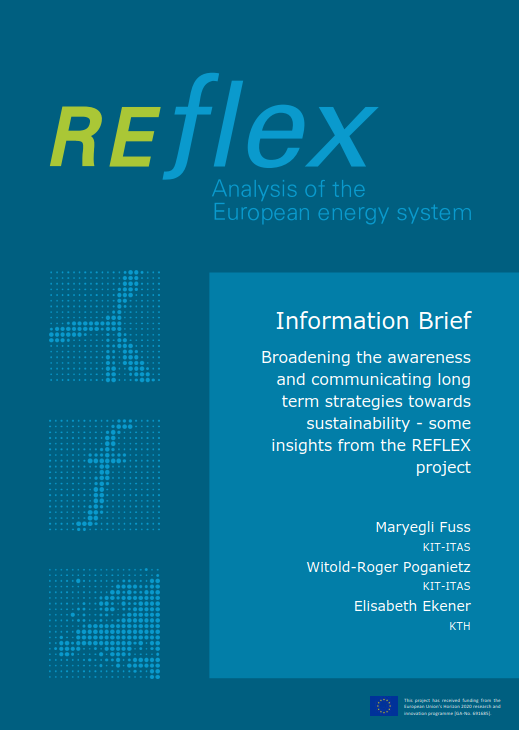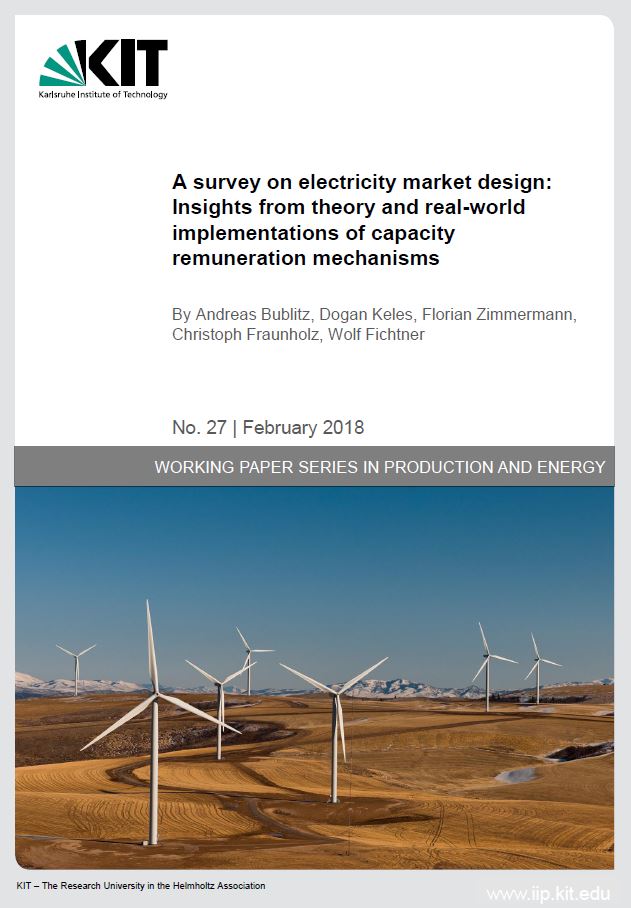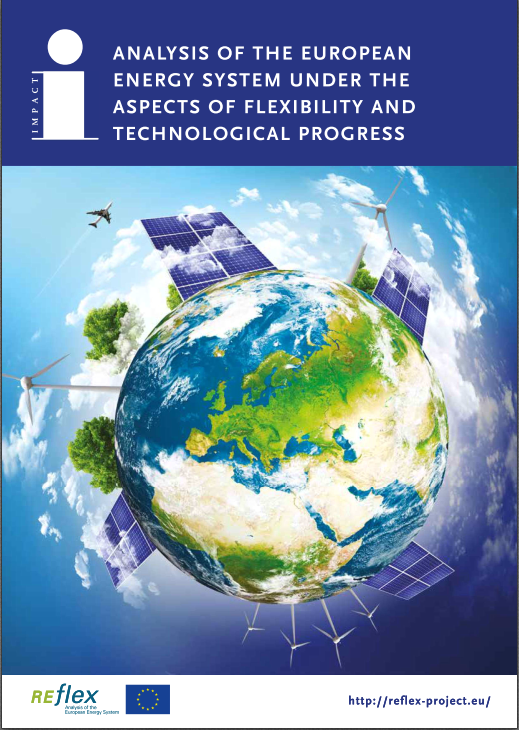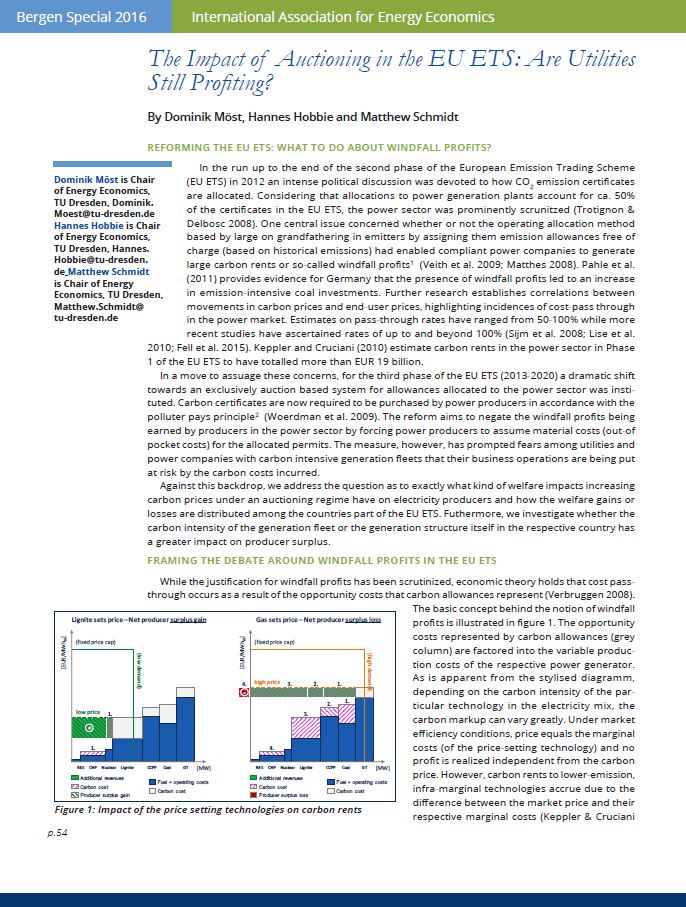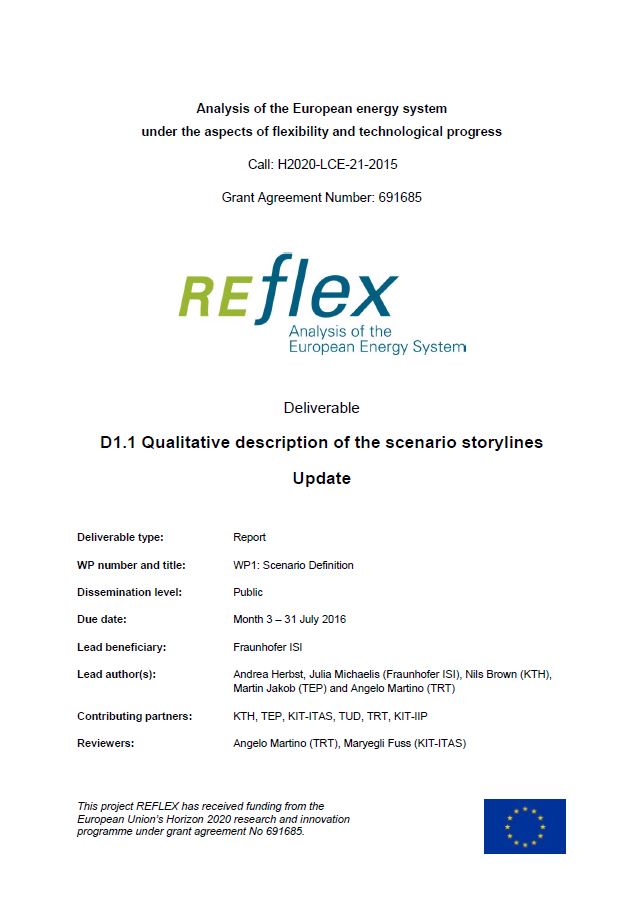 |
D1.1 Qualitative description of the scenario storylines
This document has the objective to present the draft qualitative description of the scenario storylines for the REFLEX project.
This scenario description provides the overall qualitative framework for the modelling activities in all other Work Packages by setting-up two holistic socio-technical scenarios based on different scenario storylines. That includes the definition of the main framework parameters and a draft of the societal and political environment.
|
 |
D2.1 Data Management Plan (DMP)
This document provides the draft version of the Data Management Plan (DMP) for the REFLEX project according to the Open Research Data Pilot (ORD pilot) under Horizon 2020. The purpose of the DMP is to support the data management life cycle of all data that will be collected, processed or generated by the project.
|
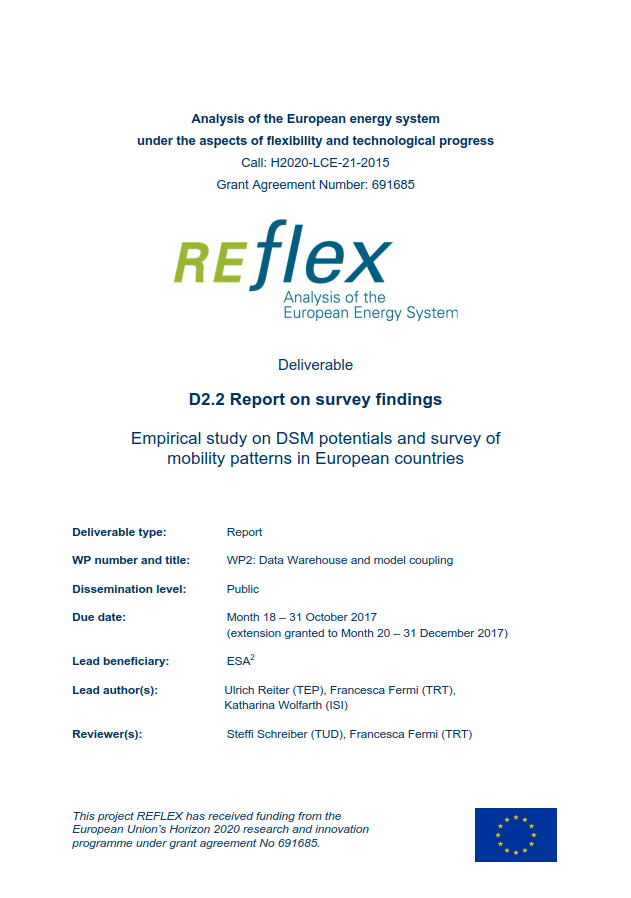 |
D2.2 Report on survey findings “Empirical study on DSM potentials and survey of mobility patterns in European countries”
In this deliverable the data gathering regarding electricity demand side management measures and mobility patterns is described, including the presentation of first results of the data analysis. These two different aspects of the energy system are under special focus due to the following reasons. On the one hand, quality data is of utmost importance for relevant model based analyses. Therefore, specific attention must be given to model input data and its foundation on empirical or measured data. On the other hand, the impact of new technology or behavioural trends has a high impact on the actuality of the model analyses.
|
 |
D2.4 Updated Data Management Plan (DMP)
The purpose of this DMP is to support the data management life cycle of all data that are collected, processed or generated in the course of the project. Research data shall be findable, accessible, interoperable and reusable (FAIR data management). We, therefore, aim to publish modelling input data as open as possible, in order to support a transparent research environment that allows third parties to validate results presented. We, second, aim to publish final project modelling results in a format that makes it possible for third parties to reuse (i.e. access, mine and exploit) the data.
|
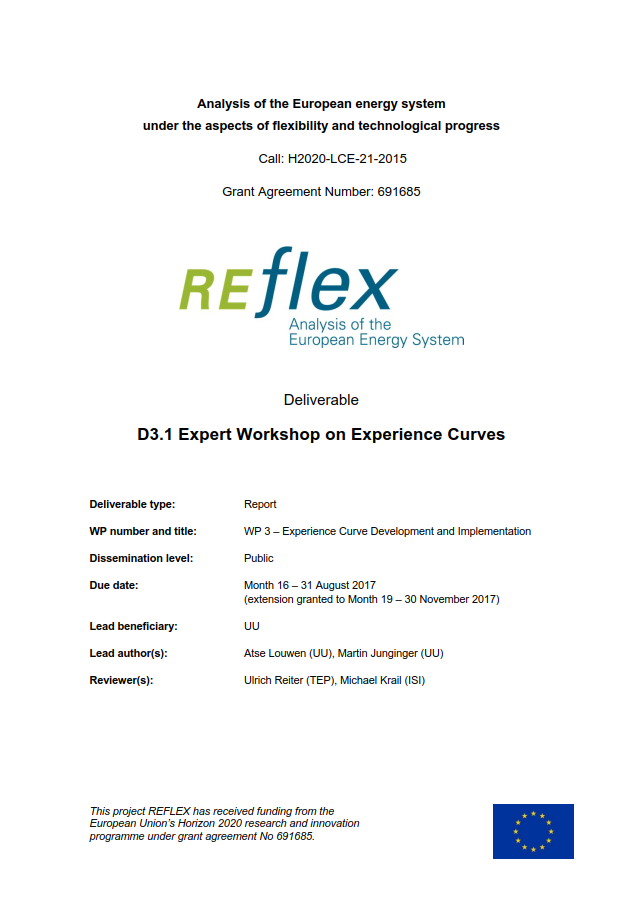 |
D3.1 Expert Workshop on Experience Curves
The Expert Workshop on Experience Curves was organised with several aims: 1) to disseminate and discuss preliminary findings of REFLEX; 2) to discuss, with experts from the field, issues regarding the methodology and applications of experience curves; 3) to discuss, with experts from the field, the implementation of experience curves in energy models and 4) to present proposed methods to apply experience curves for (ex-ante) environmental impact assessment and 5) to gauge interest and involve experts for contributing to the publication of a book on experience curves (Deliverable D3.3 of the REFLEX project). The workshop was organized on November 8th, 2017 from 09:00 – 16:20 and was hosted by KIT-ITAS in Karlsruhe, Germany.
|
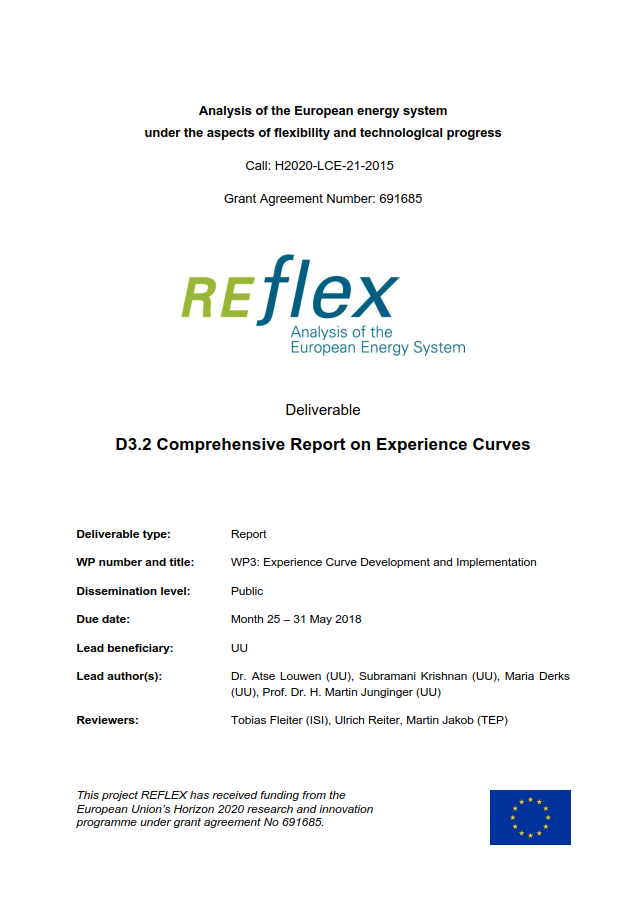 |
D3.2 Comprehensive Report on Experience Curves
Within the REFLEX project, several partners are performing modelling activities of different areas in the energy sector, including heat and power supply and demand, residential and industrial energy demand, and the transport sector. Since these modelling activities require accurate cost estimations of different technologies in these sectors, this report focuses on gathering empirical data to make these future cost estimations using so-called experience curves. Aside from the application within the REFLEX project, the results of this exercise are themselves valuable for researchers, policymakers and other stakeholders.
|
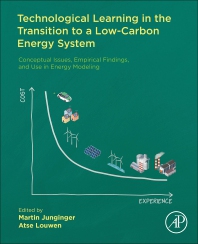 |
D3.3 Manuscript of the Technological Learning Book
Technological Learning in the Transition to a Low-Carbon Energy System: Conceptual Issues, Empirical Findings, and Use in Energy Modeling quantifies key trends and drivers of energy technologies deployed in the energy transition. It uses the experience curve tool to show how future cost reductions and cumulative deployment of these technologies may shape the future mix of the electricity, heat and transport sectors. The book explores experience curves in detail, including possible pitfalls, and demonstrates how to quantify the ‘quality’ of experience curves. It discusses how this tool is implemented in models and addresses methodological challenges and solutions.
|
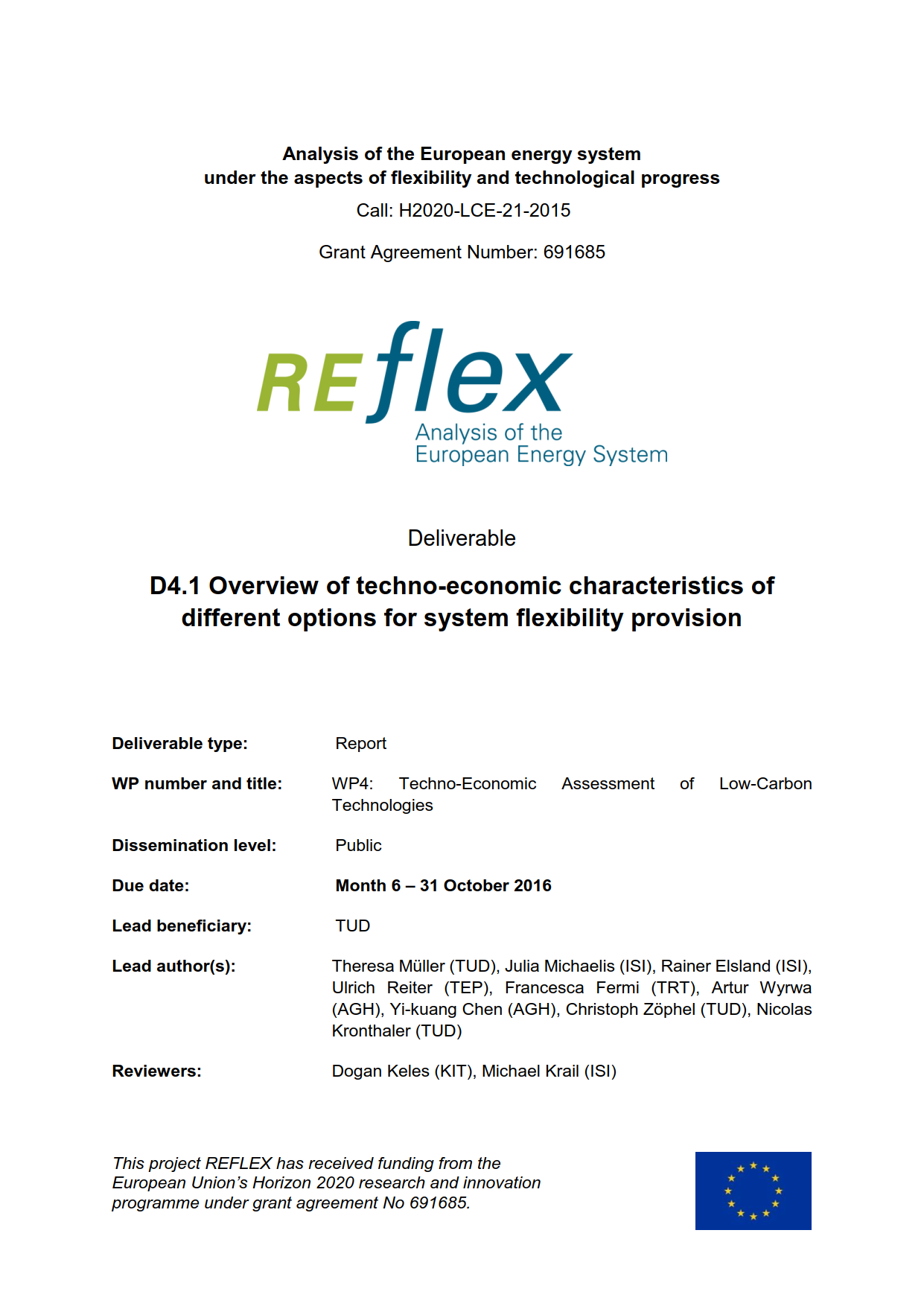 |
D4.1 Overview of techno-economic characteristics of different options for system flexibility provision
This document provides a structured overview on flexibility options for system integration of RES, compared under different criteria. The way of flexibility provision has been categorized in three different types: downward-flexibility (reducing or supplying the positive residual load), upward-flexibility (reducing excess feed-in of renewable energy sources) and shifting-flexibility (spatial or temporal shifting).
|
 |
D4.2 Expert Workshop on Energy System Modelling with special focus on system flexibility
The objectives of the workshop were: to disseminate and discuss preliminary findings of the REFLEX project; to discuss, with experts the methodology and applications of experience curves and the implementation of technological learning in energy system models; as well as to present proposed methods to apply technological learning for (ex-ante) environmental impact assessment.
|
 |
D4.3 Report on cost optimal energy technology portfolios for system flexibility in the sectors heat, electricity and mobility
The deliverable provides a detailed techno-economic assessment of low-carbon technologies focusing on flexibility options and applying bottom-up sectoral models and demand projection models of the heat, electricity and transport sector. The report summarizes the findings of WP4, where prospective developments of specific technologies are identified and based on three scenarios, different technology portfolios within the sectors are discussed regarding their contribution to the integration of renewable energy sources. Hence, key objectives are to assess the development as well as interdependencies between the different demand and supply sectors considering the deployment of renewable energy sources and the given scenario framework. Further objectives are the identification of an optimal flexibility option portfolio and the identification of potentials for system enhancements by inter-sectoral substitution of flexibility measures. As a result, this deliverable identifies crucial flexibility measures for a successful transformation towards a low-carbon European energy system.
|
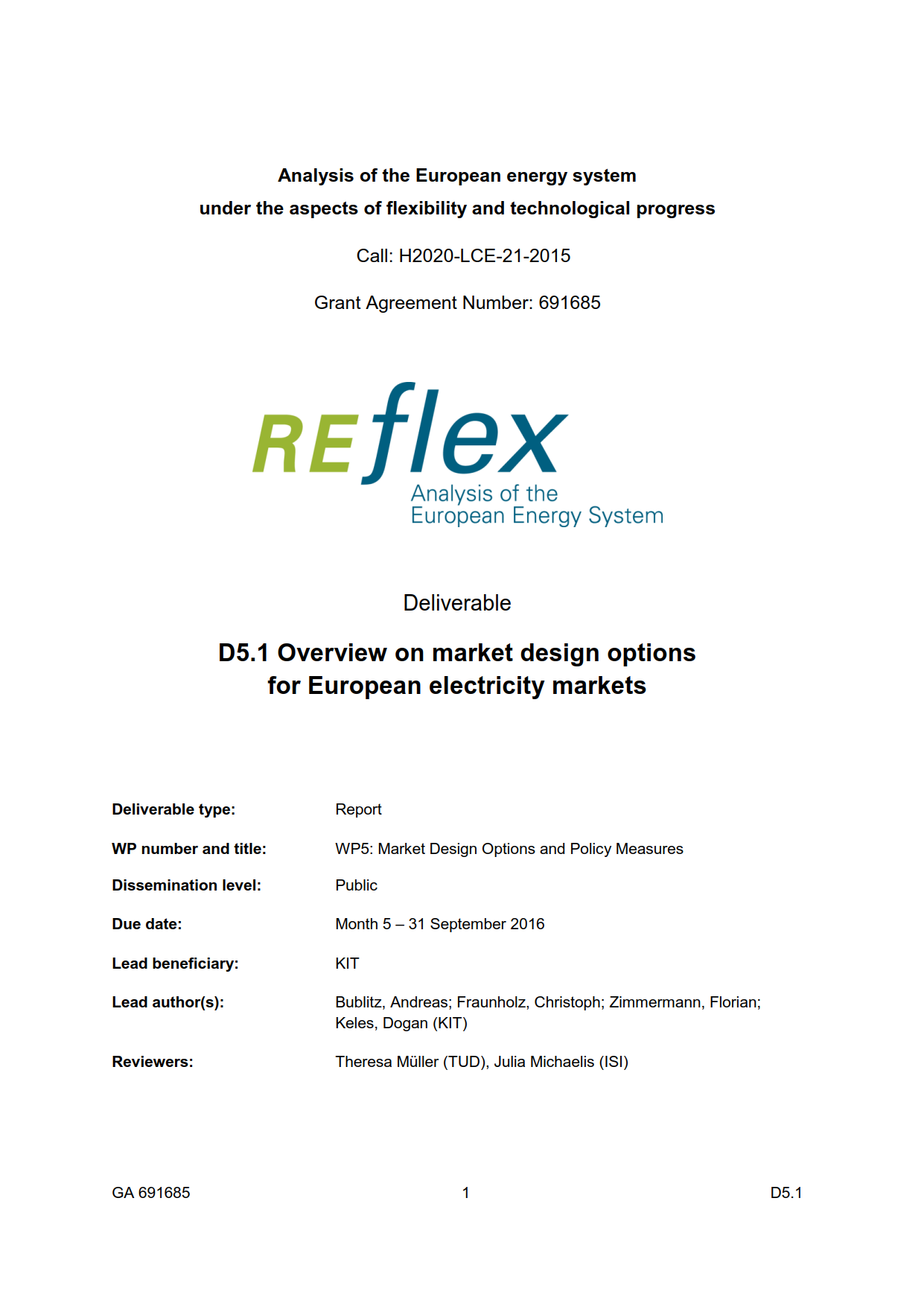 |
D5.1 Overview on market design options for European electricity markets
As concerns about generation adequacy are currently rising in Europe, decision makers try to incentivize investments in generating capacities and demand response measures. This document provides an up-to-date overview on currently implemented and proposed market design options in- and outside Europe.
|
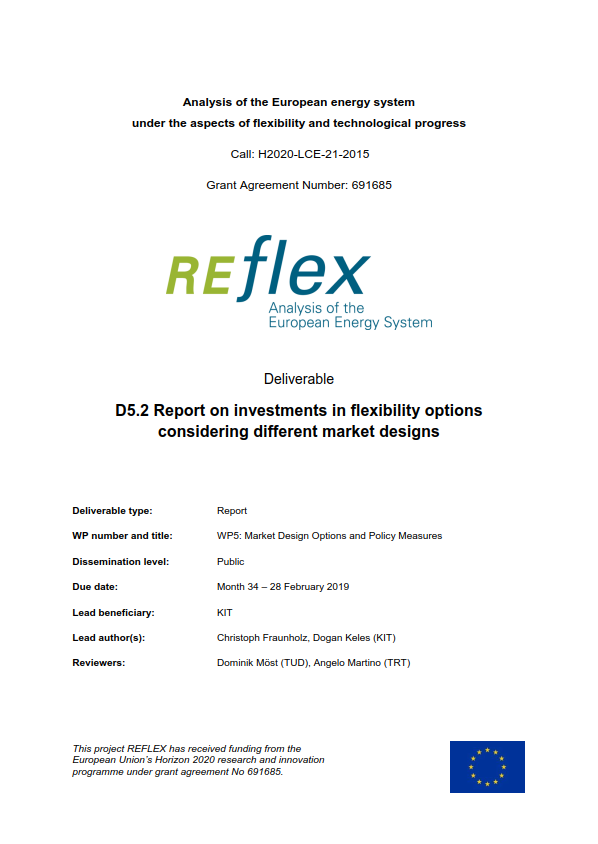 |
D5.2 Report on investments in flexibility options considering different market designs
Against the background of several European countries already using or currently considering the implementation of a capacity remuneration mechanism (CRM) as an extension to the energy-only market (EOM), this report provides a quantitative assessment of the long-term cross-border effects of CRMs in the European electricity system.
|
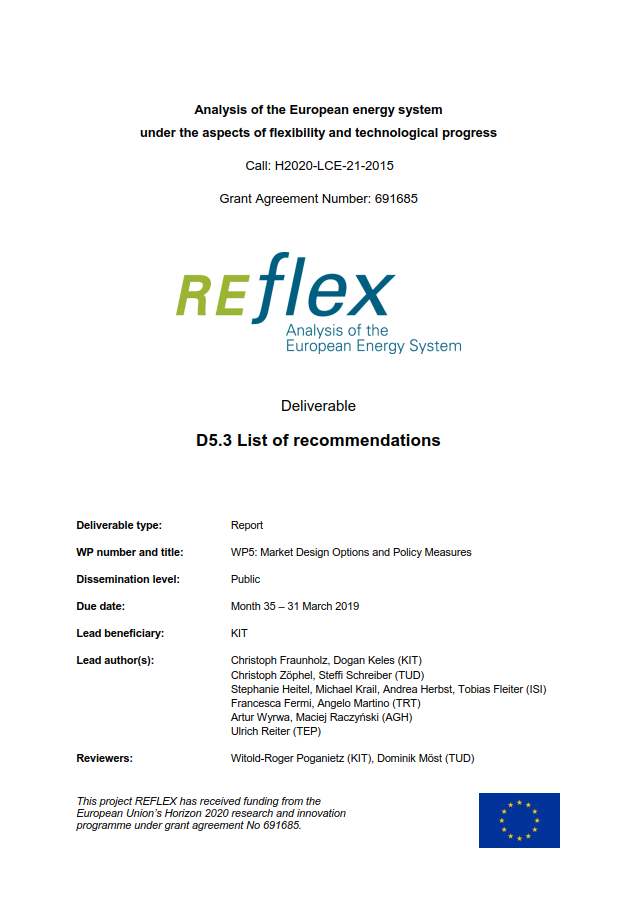 |
D5.3 List of recommendations
In the past three years, extensive research has been carried out in the REFLEX project focusing on future trends and flexibility requirements in the electricity, industry, transport and heat sectors. This document serves to provide a short but concise overview of the main findings for the different sectors and a bundle of policy recommendations derived thereof.
|
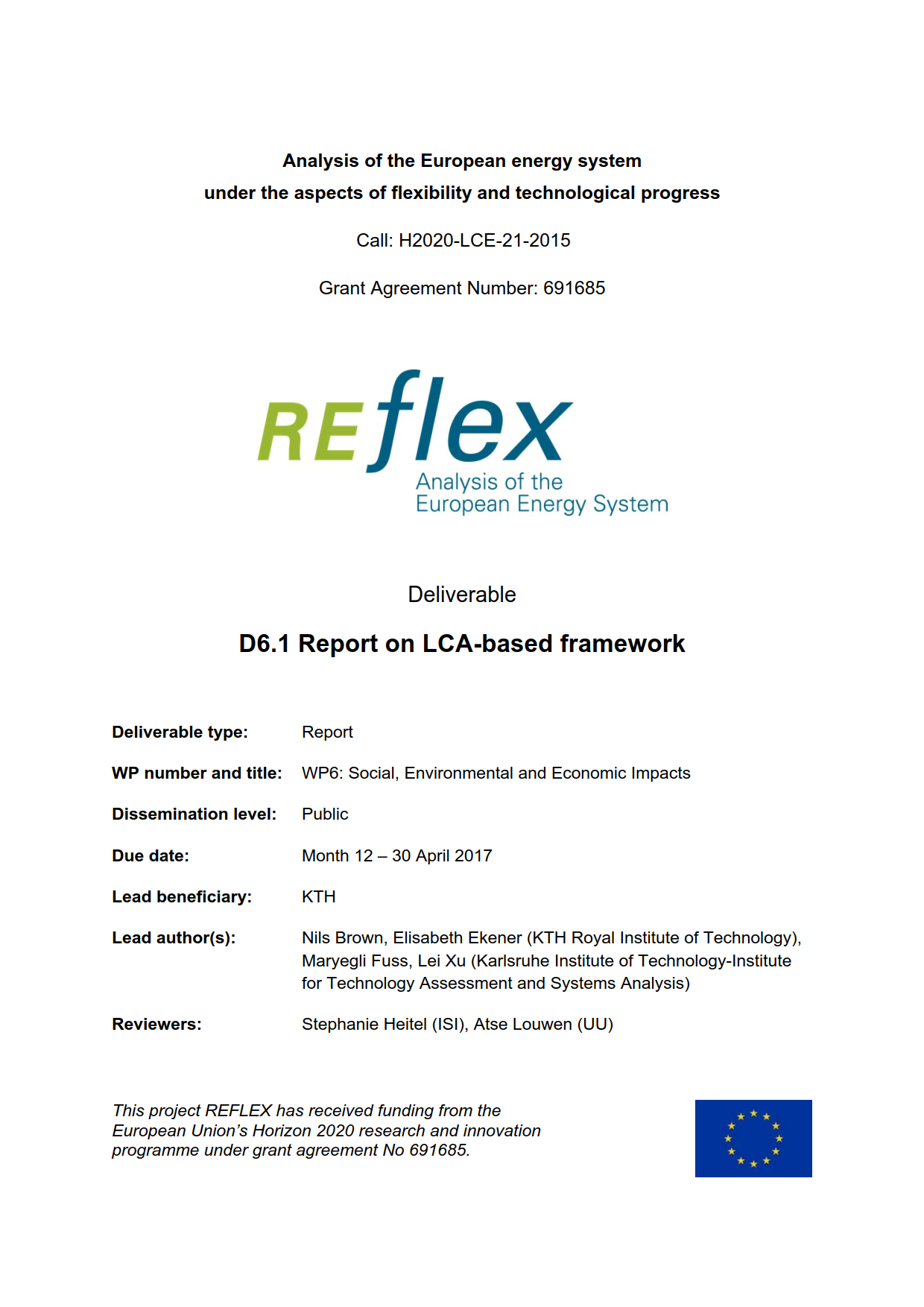
|
D6.1 Report on LCA-based framework
The aim of this work is to develop a coherent and transparent methodological framework to guide and codify the application of social environmental life cycle assessment (eLCA and sLCA) specifically for assessing future energy systems as projected by energy systems modelling (ESMs).
|
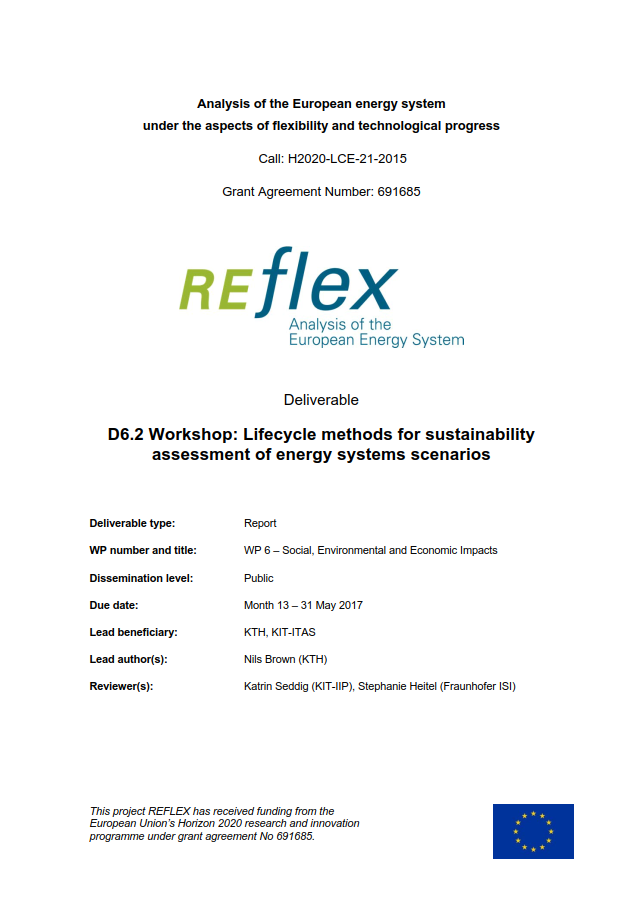 |
D6.2 Workshop: Lifecycle methods for sustainability assessment of energy systems scenarios
The workshop was carried out as a stakeholder consultation exercise in the development of life cycle assessment (LCA) based environmental and social assessment for the future energy systems for the EU considered in the REFLEX project. The specific aim of the workshop was therefore to consult LCA experts and policy makers on a proposed framework methodology for the social and environmental life cycle assessment of future energy systems scenarios. The workshop was organized as a satellite event at the Society for Environmental Toxicology And Chemistry (SETAC) annual conference 2017, 10 am – 12 noon on May 9th, 2017 at the SQUARE conference centre in Brussels, Belgium.
|
 |
D6.3 Social, environmental and external cost assessment of future energy technologies and future energy systems
This study comprised a number of different approaches to social, environmental and economic impact assessment. Firstly, a life cycle approach was applied. The goal of the life cycle-based study was to analyse and compare environmental impacts, social risks and external costs due to life cycle-based environmental impacts related to the European energy systems developed in the REFLEX project in the base year (2014) and the year 2050 for the three envisaged REFLEX scenarios. Secondly, a spatially-disaggregated impact assessment was performed with the aim of estimating health impacts and external costs of direct emissions in the REFLEX scenarios.
|
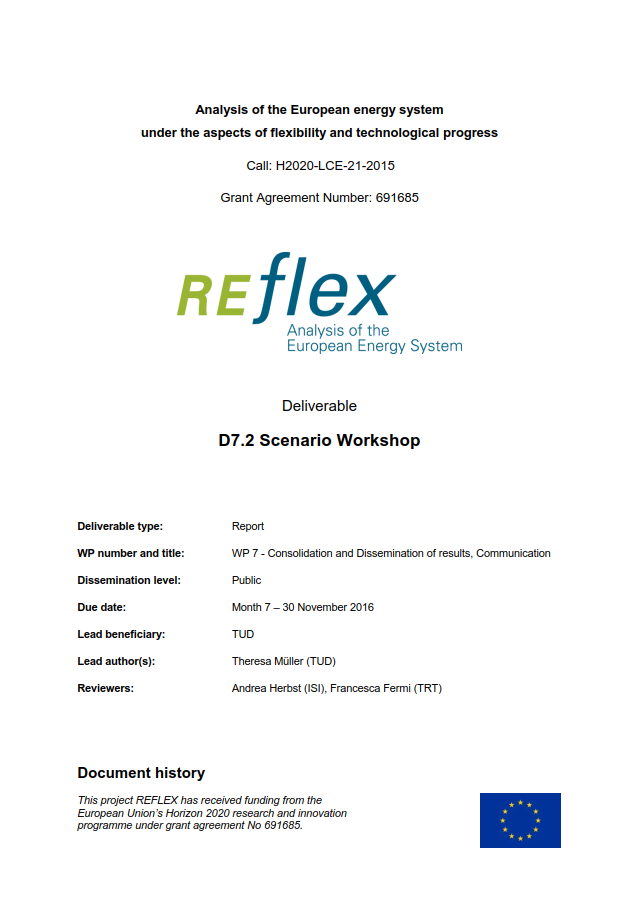 |
D7.2 Scenario Workshop
On 17th November 2016, the first public workshop of REFLEX took place in Brussels. During this event, about 50 representatives from industry, policy and science discussed the topic “Energy Decarbonisation and Flexibility Needs -How can high shares of intermittent renewable energies efficiently be balanced?”.
|
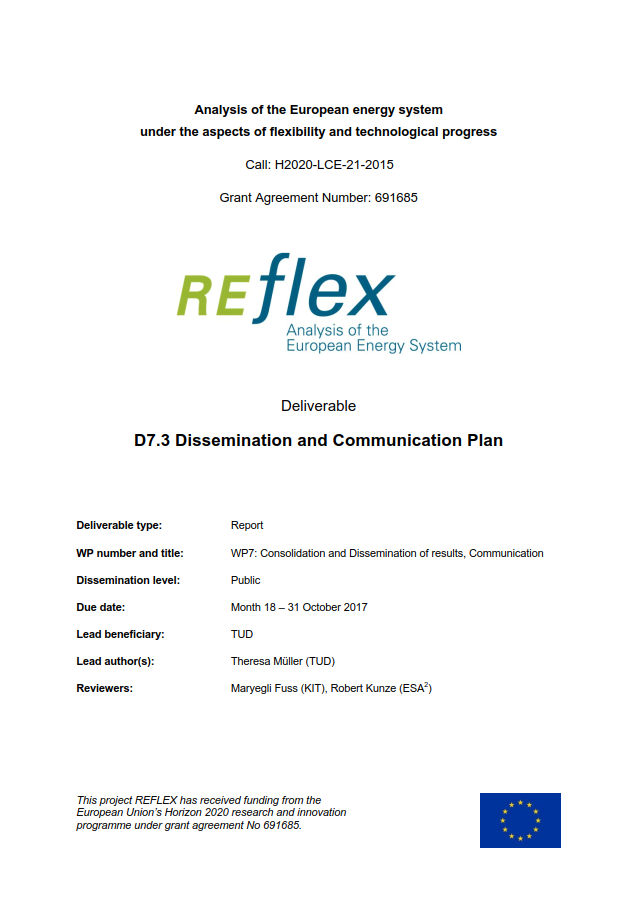 |
D7.3 Dissemination and Communication Plan (DCP)
The aim of REFLEX is to communicate and disseminate the project results as widely as possible, targeting all actors in the energy system area, including policy makers and regulators, industry and associations as well as the scientific community. This report summarizes communication and dissemination activities during the first period of the project (M1 – M18) and provides a plan for these activities in the second period (M19 – M36).
|
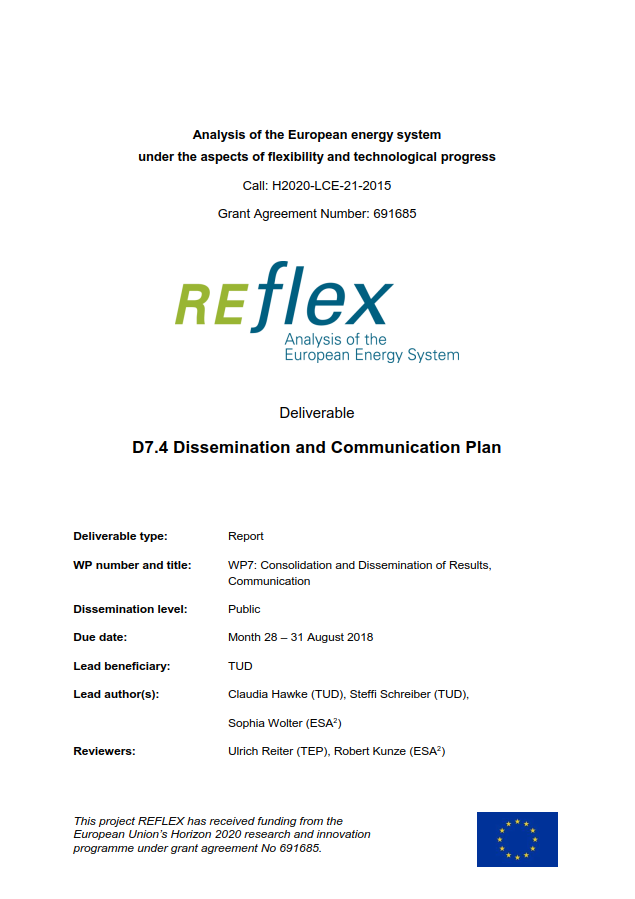 |
D7.4 Updated Dissemination and Communication Plan (DCP)
This document provides the updated version of the Dissemination and Communication Plan (DCP) for the REFLEX project according to the project’s grant and Consortium Agreements (GA and CA). The purpose of this DCP is to support a wide reach and recognition of qualitative and quantitative project results, targeting all stakeholders in the energy system area, including policy makers and regulators, industry and associations, the scientific community as well as the general interested public. The report outlines the project’s strategy for knowledge management, dissemination and communication, elaborating also on the role of the Exploitation and Innovation Manager.
|
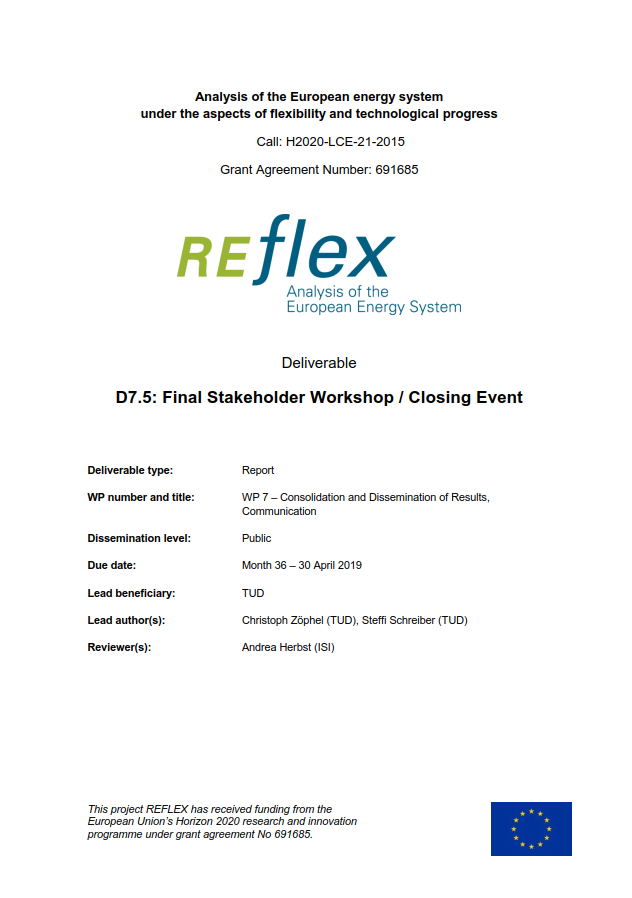 |
D7.5 Final Stakeholder Workshop / Closing Event
The Final Stakeholder Workshop and Closing Event was organized to present on discuss the results of the REFLEX project to the European Commission and other interested stakeholders from policy and industry. The communication of the projects achievements to interested stakeholders included insights regarding the scenario framework, the implementation of experience curves, the model-based sector-specific analysis, the LCA results as well as policy recommendations. The workshop was hold on April 3rd, 2019 from 13:00 to 19:00 and took place in the Saxony Liaison Office Brussels in Brussels, Belgium.
|

